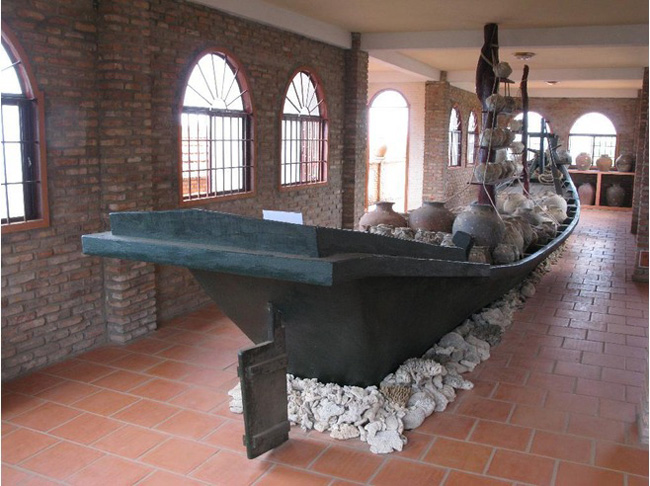Coi Nguon Museum: An Island's Story and History

Coi Nguon (The Root) Museum is a five-storey private museum in Phu Quoc Island, Duong Dong Town, situated on a hill on the Western coast of Vietnam. It was established in 2009 and covers an area of 1,000 square meters big. It is home to almost 5,000 displays, including 3,000 antiques salvaged from sunken ships and other sites around the island.
Huynh Phuoc Hue, the museum director, spent 15 years collecting thousands of artifacts before establishing the museum. He was born and grew up in a family that has lived in the island for three generations. His collection started when he studied Business Administration in Ho Chi Minh City. When he returned to the island to work as a tour guide, he continued and even expanded his collection.
On the second floor of the museum are exhibitions of axes; jar tombs; antiques from the Ly and Tran dynasties; and skeletons of different animals: dugongs, whales, crocodiles, and wild boars. Inside the jar tombs are remains of what is believed to be of the Oc Eo Culture dating back to the 1st and 7th centuries. All artifacts at Coi Nguon Museum have been appraised by the Ho Chi Minh City History Museum's Artifact Appraisal Council. More than 2,600 of these artifacts are identified from the 15th to the early 20th century, and made from stone, pottery, bronze, and fossil wood.
Aside from its displays, the museum itself is a thing of beauty. It has a wonderful view of the island and sea from every floor of the structure. To maintain its new-like quality and feel, the walls were specifically unpainted. Installations representing nature such as the sea and even animal bones are used to surround and decorate the museum.
While the second floor is composed of displays, the third floor features a wreck model of a ship found about 12 years ago on the island. Hundreds of household pottery pieces made in Thailand in the 15th century are also displayed on the said floor. On the lines of pottery, the museum also showcases collections made in the South in the 17th-19th centuries, Lai Thieu ceramics from the early 20th century, and Chinese ceramics from the 18th-19th century.
The fourth floor of the museum displays a model house with walls made from the bark of the kien kien (Anisoptera scaphula) tree. This kind of house was common on the Northern part of the island. Here, visitors can also gain knowledge about the local residents' means of livelihood and way of life in general.
Former Vice Director of the Ministry of Culture, Sports and Tourism's Culture Heritage Department Le Thi Minh Ly attested to the museum's “usefulness,” and even cited the possibility of some of the items to be national treasures. Nguyen Van Huy, Former Director of Viet Nam Museum of Ethnology, highlighted the museum's contribution to the island's “cultural and economic values.”
Hue, on his part, simply stated his own reason for establishing the museum, to show people that there was more to the island than its beautiful beaches and breathtaking sunsets. As each item in his collection has a story, he wanted to share the island's rich history and simple yet interesting lifestyle, to inspire the young islanders and everyone in general, to explore and learn more about the Phu Quoc Island, his home.









